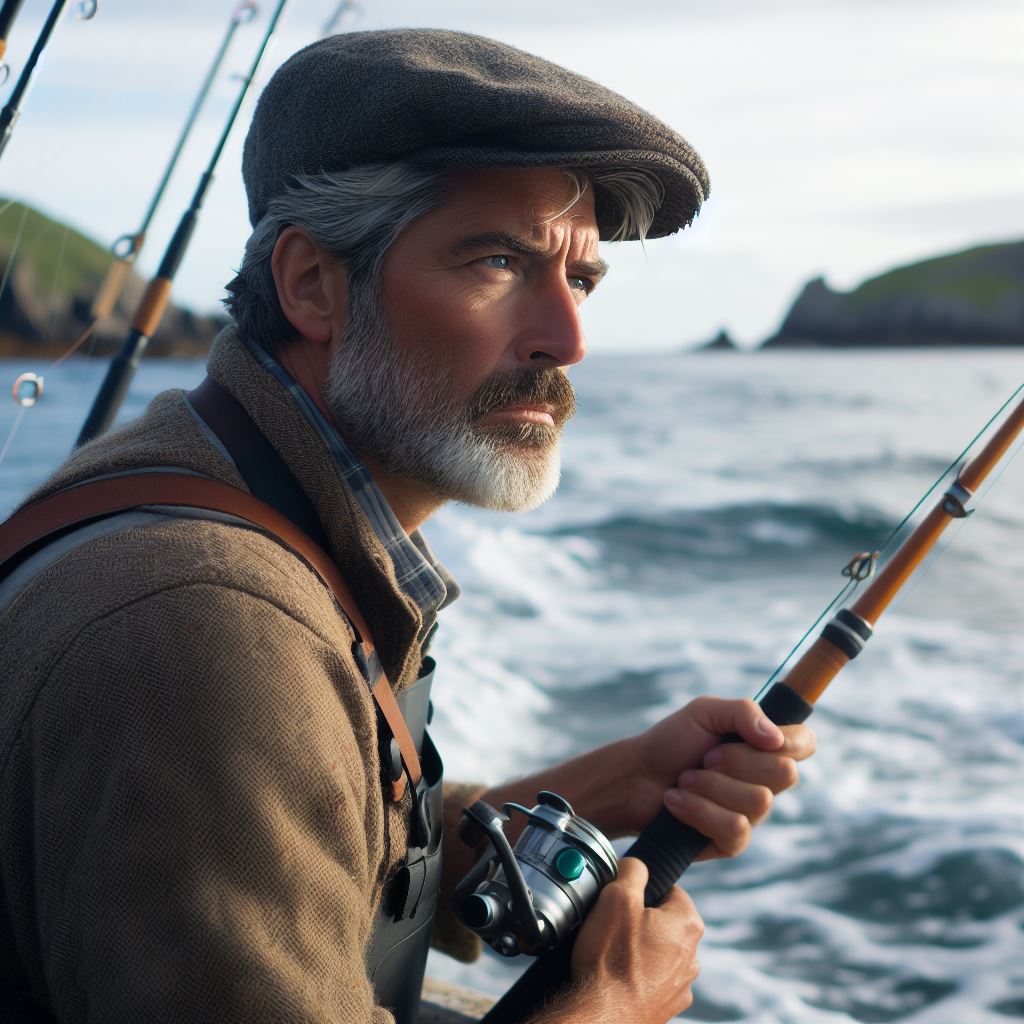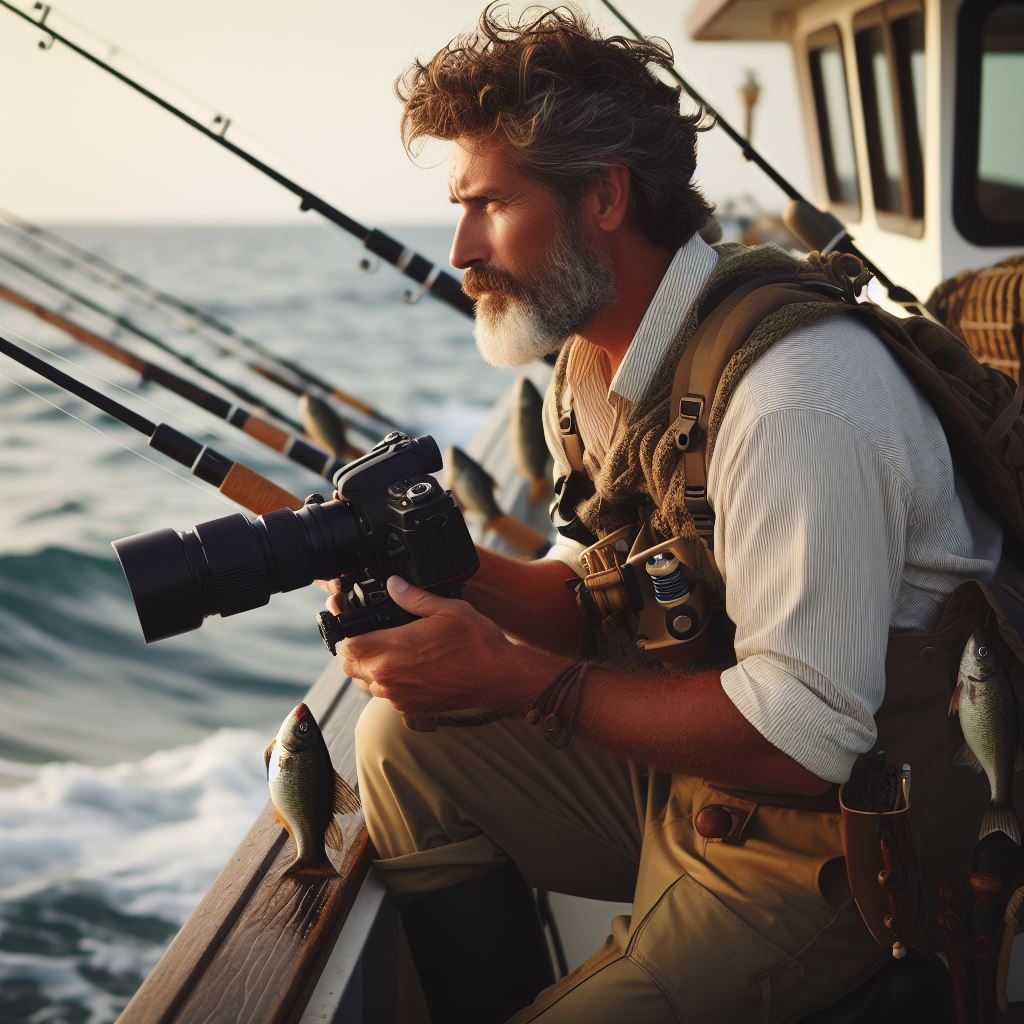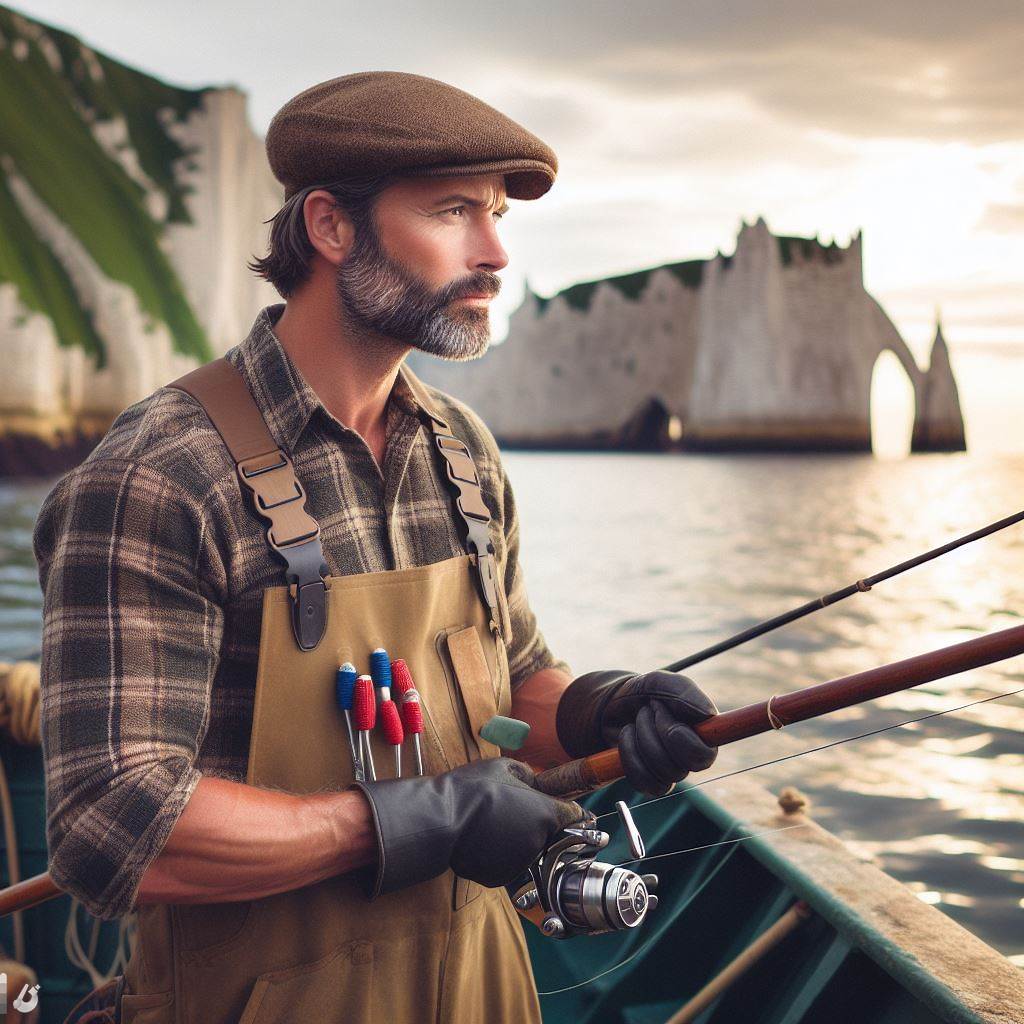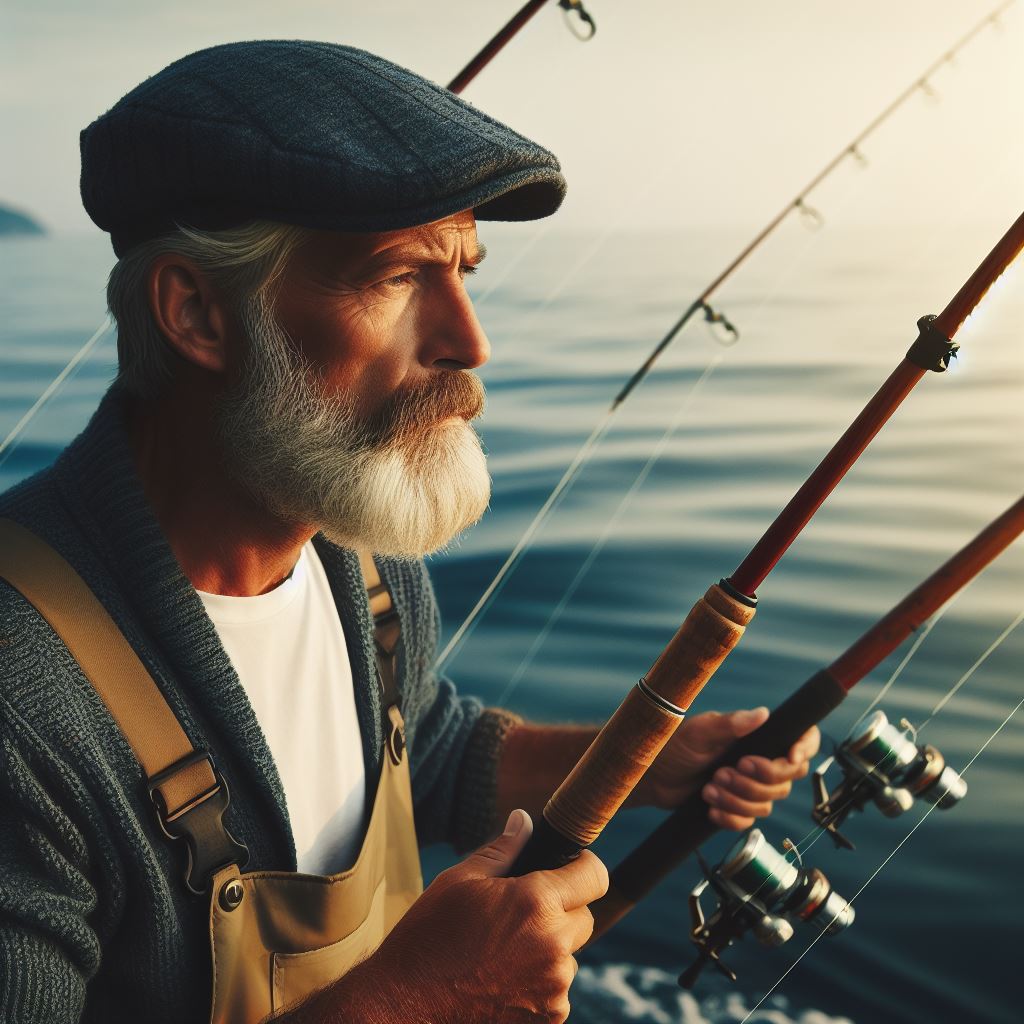Introduction
Step into the dynamic world of UK fishermen’s daily lives. This blog post unveils captivating, true stories from diverse seafarers, grabbing your attention instantly.
- Navigate treacherous waters and brave the elements with thrill and daring adventures.
- Gain insight into seafarers’ challenges, triumphs, and unique experiences through compelling narratives.
Imagine yourself on a weathered fishing vessel at dawn, anticipating the day’s catches amid the rugged British coastline.
Witness firsthand the dedication and passion driving these fishermen to venture into unpredictable oceans daily.
Prepare for heartwarming tales of camaraderie and resilience, as these men and women share bonds forged at sea.
From generations-old fishing families to new recruits, each story unveils a world of tradition, hard work, and dedication.
Discover hidden gems in coastal communities, where daily catches support local economies and cultures.
Experience the thrill of reeling in prized fish, feeling the rush of satisfaction from a successful haul.
Sit back, relax, and dive into these incredible true stories, journeying alongside UK fishermen to explore their extraordinary lives.
Background of UK Fishing
The history and significance of fishing in the UK
Fishing in the UK has a long and rich history, dating back thousands of years.
Coastal communities have relied on fishing for survival. In the medieval era, fishermen played a crucial role, employing traditional methods like trawling and netting in a burgeoning industry.
During the Industrial Revolution, the fishing industry saw significant developments, including the introduction of steam-powered boats.
In the late 19th century, the UK fishing industry experienced a boom, with the rise of fishing ports and the expansion of the British Empire.
British fishermen played a crucial role in supplying fish to the growing population and supporting the country’s economy.
Fishing continued to flourish in the UK throughout the 20th century, even during times of war when it played a vital role in feeding the nation.
Today, the fishing industry remains an integral part of the UK’s economy, supporting thousands of jobs and generating significant revenue.
Personalized UK Career Consulting
Receive tailored career guidance designed just for you. Get actionable steps and expert support to boost your career in 1-3 days. Take control of your career now.
Get StartedThe UK is known for its diverse fish stocks, including species like cod, haddock, salmon, and mackerel.
In addition to sustaining the livelihoods of fishermen, the industry contributes to the country’s food security and supports local communities.
The importance of fishing industry to the economy
The significance of the fishing industry is not limited to economics but also encompasses cultural and environmental aspects.
Many coastal regions in the UK have a strong fishing heritage, with traditions, customs, and folklore deeply intertwined with fishing.
Sustainable fishing is a paramount concern, preserving marine ecosystems and ensuring fish stocks for future generations. Challenges faced by the fishing industry include foreign fleet competition, quotas, and evolving regulations post-Brexit.
In response, UK fishermen persist through innovation, adaptation, and collaboration. They contribute to the nation’s fishing legacy amid changes and uncertainties.
Despite modern challenges, a UK fisherman’s daily life remains deeply connected to the sea, weather, and pursuing bountiful catches.
In the next section of our blog series, we will delve into the fascinating stories of UK fishermen, providing an intimate glimpse into their lives at sea.
Morning routine
In the predawn darkness, a UK fisherman’s day unfolds with a resolute commitment to the sea. Rising early, he greets the day with a silent determination, a ritual embedded in his maritime soul.
- Waking Up Early: With the first light, he breaks the silence, rising before the sun, driven by a profound connection to the ocean. The day’s canvas starts with a canvas of serene hues.
- Preparing Equipment: The clinking of gear resonates as he meticulously readies his tools—a dance of precision and routine. Nets untangled, hooks organized, and a well-worn boat, a partner in the daily maritime symphony.
- Checking Weather Conditions: Next, the weather’s oracle is consulted. A seasoned glance at the sky, a scan of the forecast; decisions made with an acute understanding of the sea’s capricious moods. Wind whispers, clouds share secrets.
- Commitment and Dedication: Dedication is woven into every seam of his weathered jacket. This life demands more than physical endurance; it craves an unyielding commitment, a bond between man and ocean.
As the sun ascends, painting the horizon with hues of amber and gold, the UK fisherman sets sail. Each ripple in the water echoes a story of resilience, a testament to the silent heroes of the maritime dawn.
In this daily odyssey, commitment is not just a choice; it’s the heartbeat of a life lived in rhythm with the tides.
Heading out to sea
setting sail or heading out to sea
With the dawn’s first light, a UK fisherman’s journey begins, setting sail into the vast embrace of the sea.
- Preparing to Sail: He strides purposefully, the scent of salt in the air, preparing his vessel for the day’s venture.
- Varieties of Fishing Boats: Along the docks, a diverse fleet awaits – trawlers, longliners, and crabbers – each tailored to the catch.
- Trawlers: Sturdy trawlers dominate, equipped with massive nets that dance through the depths, harvesting the ocean’s bounty.
- Longliners: Sleek longliners stretch their lines into the horizon, seeking patience in the pursuit of prized catches.
- Crabbers: Compact crabbers scuttle out, pots in tow, a ballet of anticipation for the delectable treasures beneath.
- Challenges at Sea: As the boat cuts through waves, challenges emerge – unpredictable weather, treacherous currents, and the relentless task of navigation.
- Importance of Safety Measures: Amidst the rhythmic hum of engines, safety takes the helm. Life vests secure, radio frequencies checked – a solemn pact with the unpredictable.
- The Sea’s Unpredictability: The sea, though a provider, can be capricious. Weather shifts, and waves surge, underscoring the necessity of constant vigilance.
In this aquatic ballet, a UK fisherman’s voyage is a symphony of skill, machinery, and respect for the unpredictable sea.
Each departure is a dialogue with nature, a dance that echoes through the maritime sections of a fisherman’s life.
Your Dream Job Starts with a Perfect CV
Get a tailored CV and cover letter that captures your unique strengths and stands out in your industry. Let us help you make an unforgettable first impression.
Get StartedTypes of fishing boats used in the UK
As the sun ascends, UK fishermen deploy diverse techniques, a choreography of skill honed by generations.
- Longlining: Casting long lines, they patiently await the underwater ballet, reeling in a variety of fish species.
- Trawling: Trawlers carve through the currents, nets skimming the depths to unveil the ocean’s hidden treasures.
- Potting: Compact crab pots descend to the seabed, a silent invitation for crabs to reveal their succulent secrets.
- Gillnetting: Delicate gillnets entwine the aquatic ballet, capturing fish in a mesh embrace, a testament to precision.
- Seining: Seiners encircle their prey, executing a synchronized dance to enclose schools of fish in their watery embrace.
- Diverse Catches: UK waters teem with an array of catches – cod, haddock, mackerel – a testament to nature’s bounty.
- Specialized Nets and Traps: Specialized nets and traps are deployed, tailored to the nuances of each species, a testament to expertise.
- Precision in Fishing Lines: Fishing lines, fine-tuned like a musician’s instrument, delicately probe the depths for prized catches.
In this aquatic symphony, UK fishermen harmonize with the sea, employing techniques passed down through time, ensuring the sustenance of communities and the continuation of a timeless tradition.
Challenges faced at sea and the importance of safety measures
Facing the relentless sea, UK fishermen confront challenges, emphasizing safety as a non-negotiable priority in their perilous profession.
- Unpredictable Weather: Battling fierce winds and unpredictable storms, they navigate the tempest, a dance with nature’s unpredictable whims.
- Treacherous Currents: Treacherous currents test their mettle, demanding skillful navigation through a labyrinth of underwater forces.
- Navigational Precision: Precision becomes paramount as they chart courses, relying on skill and instinct to navigate ever-shifting seascapes.
- Constant Vigilance: In the open expanse, they maintain constant vigilance, eyes scanning the horizon for signs of impending challenges.
- Equipment Malfunctions: Mechanical glitches are adversaries at sea. Quick thinking and hands-on expertise are crucial when machinery falters.
- Isolation and Self-Reliance: Isolated on the vast expanse, self-reliance is a virtue. Each fisherman is a master of his ship, a lone captain.
- Emergency Response: The unexpected demands readiness. Training kicks in for swift emergency responses, whether medical or mechanical.
- Life Preserving Measures: Life vests donned, radio frequencies checked—safety measures are ingrained, forming an unspoken pact with the unpredictable sea.
In this perilous ballet with the elements, safety is not just a practice; it’s a lifeline.
UK fishermen, guardians of the sea, navigate challenges with courage and an unwavering commitment to return safely to the shores they call home.
Heading out to sea is an adventure filled with excitement, challenges, and risks. Fishermen in the UK rely on their expertise, experience, and safety measures to navigate the waters and bring in a successful catch.
It is their dedication and commitment that keep this ancient profession going strong.
Read: Arborist Career Paths: UK Opportunities
Fishing techniques
Different fishing techniques used by UK fishermen
- UK fishermen employ a wide range of fishing techniques to catch fish in their waters.
- Some techniques include trawling, angling, longlining, netting, and potting.
- Trawling involves dragging a net along the seabed to catch fish like cod, haddock, and sole.
- Anglers catch fish using hooks on a fishing line, employing baits like worms, maggots, or artificial lures.
- Different baits can be used in angling, such as worms, maggots, or artificial lures.
- Longlining is a method that involves setting a line with baited hooks at regular intervals.
- Longlining sets baited hooks at intervals, commonly capturing tuna, swordfish, and hake.
- Netting is another technique where large nets are used to enclose fish in a specific area.
- Large nets enclose fish in netting, performed near shore or at sea, targeting specific species.
- Potting refers to using pots or traps to catch shellfish like crabs, lobsters, and prawns.
Various types of fish caught in UK waters:
- UK waters are abundant with various types of fish, appealing to both commercial and recreational fishermen.
- Common fish species caught include cod, haddock, plaice, mackerel, salmon, trout, and bass.
- Cod is a popular fish in the UK, with flaky white flesh and a mild taste.
- Haddock is another common fish, often used in fish and chips due to its delicate flavor.
- Plaice is a flatfish with firm, sweet flesh, commonly found on the seabed.
- Mackerel is a highly migratory fish with oily flesh, popular for smoking or grilling.
- Salmon and trout are prized for their rich flavors and are sought after by anglers.
- Bass is a prized fish for recreational fishermen, known for its strong fighting ability.
- Other species like mullet, whiting, pollack, and sole are also caught in UK waters.
Use of specialized nets, traps, or fishing lines
- UK fishermen commonly use specialized nets, traps, or fishing lines to catch specific fish species.
- Trawl nets are designed to sweep along the seabed, catching fish in its path.
- Some trawl nets have a mesh size that allows smaller fish to escape, reducing bycatch.
- Gillnets are another type of net that allows fish to swim into it but entangles them by their gills.
- Crab and lobster pots are used to trap shellfish, with bait placed inside to attract them.
- Longlines consist of a mainline with numerous baited hooks attached at intervals.
- These lines can be several miles long and are used to catch fish like tuna and swordfish.
- Anglers often use specialized fishing lines, such as braided lines, for their strength and sensitivity.
- These lines allow anglers to feel even the slightest bite, enabling better hook sets.
- Specialized fishing gear helps UK fishermen target specific species while minimizing unwanted catches.
In general, UK fishermen employ a variety of fishing techniques, target different fish species, and use specialized nets, traps, and fishing lines to maximize their catch while minimizing bycatch.
The rich diversity of fish found in UK waters provides ample opportunities for both commercial and recreational fishermen to enjoy their day on the water.
Read: Key Arboriculture Trends in the UK 2024
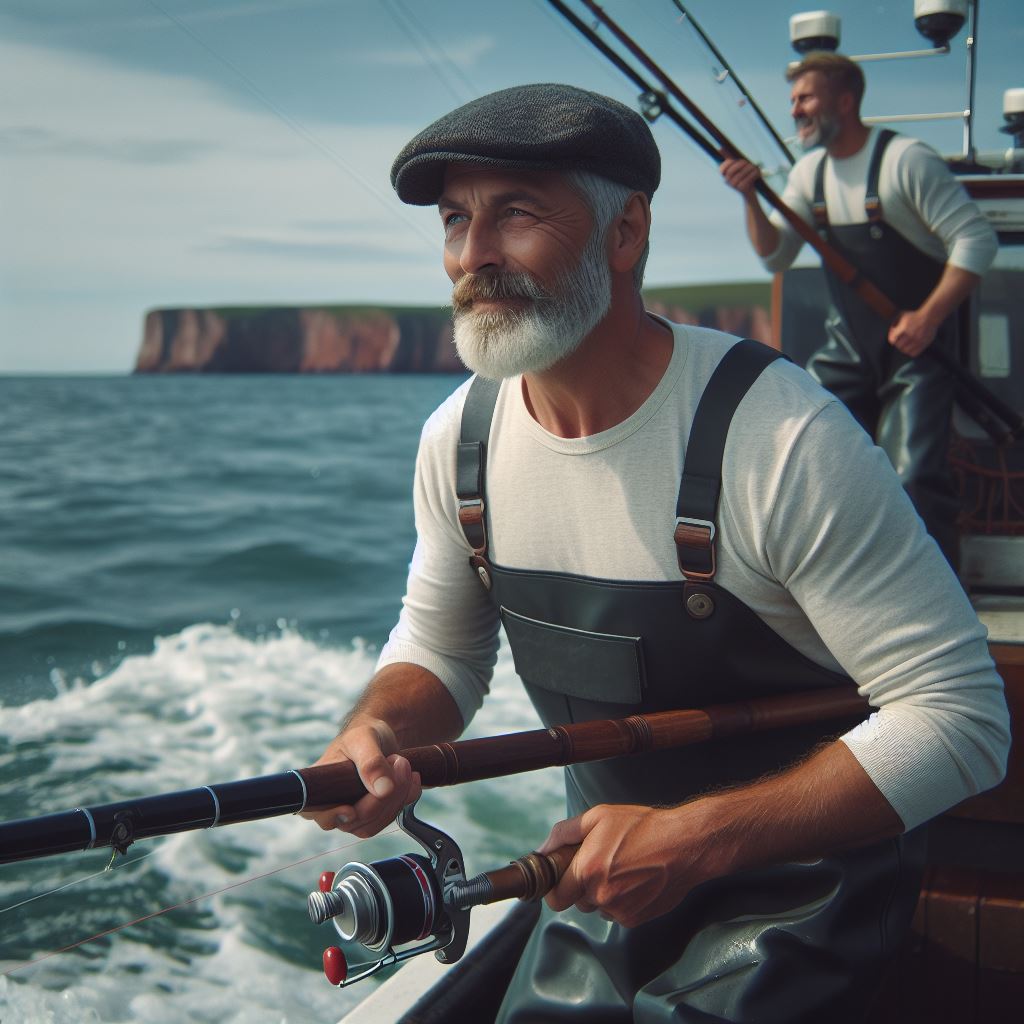
Hauling the catch
Hauling the catch demands a UK fisherman’s daily commitment, requiring physical strength, teamwork, and dedication to sustainable fishing practices.
Precision in Maneuvering Heavy Nets
The process commences with the intricate maneuvering of heavy nets, a skill that demands precision and expertise.
The fishermen deftly navigate the waters, strategically positioning the nets to maximize the catch without compromising the delicate balance of marine ecosystems.
Physical Strength and Teamwork
Hauling in the catch is an embodiment of physical prowess and teamwork.
Optimize Your LinkedIn for Success
Boost your LinkedIn profile with a professional bio, keyword-rich headline, and strategic recommendations that attract recruiters. Stand out from the crowd and get noticed.
Optimize NowEach member of the crew contributes their strength, working in tandem to bring in the nets laden with the day’s harvest.
The collective effort showcases not only the physical endurance of the fishermen but also the synergy that exists among them.
Sustainable Fishing Practices:
Amidst the exertion, there is a profound recognition of the importance of sustainable fishing practices.
The commitment to responsible and ethical fishing is embedded in the very fabric of this process.
Fishermen are acutely aware of the need to strike a balance between meeting the demands of their livelihood and ensuring the long-term health of the marine environment.
Preserving Marine Ecosystems
Sustainable practices extend beyond the immediate catch. Fishermen actively engage in methods that minimize bycatch and avoid detrimental impacts on non-target species.
This conscientious approach is essential for preserving the delicate balance of marine ecosystems.
Securing Future Abundance
Sustainable fishing is not just a buzzword but a guiding principle.
The foresight exercised in adhering to responsible practices reflects a commitment to securing the abundance of the seas for future generations.
People depending on oceans recognize their livelihoods are closely tied to ocean health.
Hauling in the catch isn’t just routine—it embodies a fisherman’s dedication, resilience, and environmental consciousness in authentic UK stories.
Each pull of the net is not only a testament to physical strength but a commitment to a sustainable and harmonious coexistence with the oceans that sustain their way of life.
Read: Women in UK Agricultural Management
Sorting and Preservation
In the world of UK fishermen, ensuring the catch remains fresh and in optimal condition is crucial. To achieve this, several methods are employed to sort and preserve the fish.
Proper handling plays a pivotal role in maintaining the quality of the catch.
Sorting the Catch
When the fishermen return from their fishing expeditions, the first step is to sort the catch. This involves separating the different species of fish and categorizing them accordingly.
By doing so, it becomes easier to implement specific preservation methods for each type.
The fish are carefully inspected for any visible signs of damage or spoiling. This step is essential to identify any fish that may not be suitable for consumption.
Remove such fish from the catch promptly to preserve overall quality.
Preservation Methods
After sorting the catch, employ preservation methods to ensure fish freshness and optimal condition.
- Chilling: Fishermen use ice or refrigeration to keep the fish at low temperatures. This slows down the natural decay processes and prolongs the freshness of the catch.
- Icing: Icing maintains low fish temperature, extending shelf life. This further extends the shelf life of the fish.
- Freezing: Freezing at sea preserves texture, flavor, and nutrition. Rapid freezing helps retain the texture, flavor, and nutritional value of the fish.
- Smoking: Smoking enhances flavor, prolongs storage, and acts as a natural preservative. This process enhances the flavor, extends the storage time, and acts as a natural preservative.
- Canning: Canning involves processing the fish and sealing it in airtight containers. This method provides a long shelf life while retaining the taste and nutritional content.
Importance of Proper Handling
Proper handling is of utmost importance when it comes to preserving the quality and freshness of the catch.
Train fishermen in gentle handling to prevent fish damage. Rough handling can cause bruising and result in the deterioration of the fish’s quality.
Secondly, strict hygiene standards are followed to avoid contamination. Fishermen ensure their hands, utensils, and equipment are clean and sanitized before handling the catch.
This helps prevent bacterial growth and maintain the fish’s nutritional value.
Insulated containers or ice maintain fish temperature, preventing spoilage. Ensure prompt transportation from the vessel to the market.
In fact, the sorting and preservation of the catch is crucial for UK fishermen to maintain the freshness and optimal condition of the fish.
Careful sorting, preserving methods, and proper handling techniques maintain quality, ensuring consumers get the best product possible.
Read: Arborist Safety Techniques in the UK
Learn More: Forestry and Public Health Connection
Return to shore
As the sun begins its descent, casting a warm golden glow upon the vast expanse of the sea, the triumphant return of UK fishermen from a day at sea unfolds as a maritime saga.
The journey back to shore after a successful day of fishing
The journey back to shore is a grand spectacle, each boat slicing through the waves, laden with the day’s treasures.
Laughter and camaraderie permeate the salty air as weathered hands skillfully navigate the vessels.
The shared victories of a bountiful catch create an atmosphere of celebration, echoing the ancient tales of seafaring communities.
The sense of satisfaction and accomplishment felt by the fishermen
A sense of profound satisfaction permeates the scene, a testament to the hard work and dedication invested in the day’s endeavors.
The taste of success lingers on the lips, much like the sea salt clinging to the fishermen’s weather-beaten clothes.
Yet, beyond the personal triumph, there’s a practical urgency to the return journey. Timeliness is not just a virtue but a crucial factor for the fishing industry.
Returns for marketing and distribution purposes
The fresh catch demands swift return for optimal marketing and distribution, ensuring that the fruits of their labor reach the market in prime condition.
As the boats navigate the final stretch towards the harbor, the anticipation builds. The nets, shimmering in the fading sunlight, are heavy with the day’s spoils—silvery treasures from the depths of the sea.
The vessels approach the dock with a grace born of familiarity, a dance perfected through countless cycles of departure and return.
The docking process is more than a mere routine; it is a ritual of accomplishment, a tangible affirmation of the fishermen’s resilience against the unpredictable whims of the sea.
The harbor comes alive with activity as onlookers, market vendors, and fellow fishermen gather to witness the return of the maritime heroes.
Cheers and applause greet each boat’s arrival, acknowledging the toil and perseverance invested in the day’s expedition.
The day at sea, marked by the rhythmic pull of nets and the ebb and flow of the tides, culminates in this triumphant return, creating a seamless link in the age-old chain of fishing traditions.
In the fading light, the harbor transforms into a bustling marketplace. The catch is meticulously unloaded, sorted, and prepared for distribution.
The symbolism of the returning boats extends beyond personal success; it is a collective achievement, a contribution to the sustenance of communities and the interconnected web of the fishing industry.
The tales of a day in the life of a UK fisherman come full circle as the boats rest in the harbor, temporarily finding respite from the boundless expanse of the sea.
The sense of accomplishment lingers in the air, a reminder of the dedication, resilience, and environmental consciousness woven into the fabric of these authentic maritime stories.
Conclusion
In closing, a day in the life of a UK fisherman is filled with challenges, rewards, and dedication.
From the early morning wake-up calls to the unpredictable weather conditions, these fishermen face numerous obstacles on a daily basis.
However, their hard work and perseverance pay off when they bring in a bountiful catch.
From the moment they set sail, fishermen are faced with the unpredictability of the sea. They must maneuver their boats through rough waters and unpredictable currents.
Even in the face of these challenges, they remain dedicated to their craft, knowing that their livelihoods depend on it.
The rewards of being a fisherman are not just financial. The satisfaction of a successful catch and providing fresh seafood for families across the UK are priceless.
Their work contributes to the nation’s seafood industry and ensures that people have access to high-quality, locally sourced fish.
It is essential for us, as readers, to appreciate the hard work and dedication of these fishermen. They endure long hours and put their lives at risk to bring us the seafood that we enjoy.
Let us not take their efforts for granted. Instead, let us support the fishing industry and recognize the profound contribution it makes to our lives.
So, the next time you sit down for a delicious seafood meal, take a moment to think about the fisherman who made it possible.
They are the unsung heroes of the sea, and their tireless commitment deserves our utmost respect and appreciation.
[E-Book for Sale]
500 Cutting-Edge Tech Startup Ideas for 2024 & 2025: Innovate, Create, Dominate
$19.99 • 500 Tech Startup Ideas • 62 pages
You will get inspired with 500 innovative tech startup ideas for 2024 and 2025, complete with concise descriptions to help you kickstart your entrepreneurial journey in AI, Blockchain, IoT, Fintech, and AR/VR.

